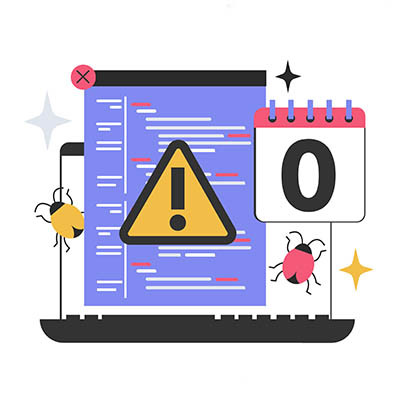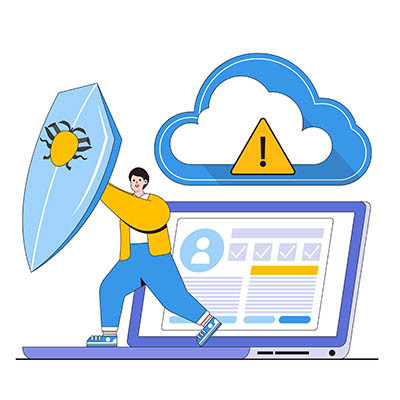Word processors are a part of office life, so it helps to know as much as you can about them. Today, we want to think about ways you can adjust text size, especially after you copy and paste content into a document. Not only will we cover how to do so as plain text, but also how to use keyboard shortcuts to increase or decrease text size and add special formatting without navigating clunky menus.
Global Tech Solutions Blog
Remember Tay? Microsoft's 2016 AI chatbot that the internet turned into a wildly offensive, racist mess in just 16 hours? It was a spectacular, public failure that proved one thing: Garbage In, Garbage Out.
Today, the garbage isn't just on Twitter. It's the highly sensitive, proprietary data your own employees are accidentally leaking into the public domain.
Have you ever thought about why your home Wi-Fi is fantastic in one spot but completely vanishes in another? You might have paid for the fastest internet package and own a brand-new router, yet you still deal with frustrating dead zones and slow connections. It turns out that one of the most crucial elements affecting your speed isn't your internet company or the router itself; it's simply where you decide to place the device.
You’ve locked down your network with cybersecurity—but what about the risks right outside your door? Physical security breaches are a serious threat to your employees, data, and critical equipment. For any small business owner, addressing this issue isn’t just good practice—it's a necessity for true peace of mind.
Is your business still tied up with its rapidly aging server hardware? This can stifle your company’s growth, whether you realize it or not. The good news is that the cloud offers ways for your business to transcend the limitations of traditional IT, and with a cloud-first IT model, you can work toward making the cloud your default and preferred choice for all your new IT initiatives.
Today, we’ll look at why the cloud-first model is the preferred choice for modern business owners, as well as how it can lead to more scalability, cost predictability, and remote work potential for your company’s employees.
It’s the holiday season, so many people will be spending a lot of time online, likely seeking out the perfect gift for everyone on their list. Considering you’re reading this blog, you could be one of them. Do you have the perfect gifts in mind for everyone in your circle, but just can’t seem to find what you’re looking for?
Let’s go over some tricks that Google has baked into its search functionality, and how they could prove handy during your holiday shopping… and your workday, too!
Let’s imagine that your business has a hidden back door—one that your building manager doesn’t even know exists—and that door leads straight into the heart of your office. By the time someone finds out that door exists, someone could have snuck in to wreak all kinds of havoc, unbeknownst to you. This is what is known as a zero-day threat; it’s a security vulnerability that is being actively exploited in the wild, one that was previously unknown to the vendor and unpatched against, and it’s a serious problem for any SMB.
We’ve all said it. It’s the unofficial motto of pragmatism, the quiet commitment to frugality that businesses cling to: If it ain't broke, don't fix it.
It feels responsible. It feels safe.
Here is the hard truth from an IT professional: When it comes to your business technology, this motto is a recipe for disaster. It is the single most dangerous, most expensive, and highest-risk strategy you can have.
Imagine that your screen flashes a devastating message: your critical data is encrypted, and you face a massive ransom demand. Your operation grinds to a halt. This isn't just an enterprise problem; it's the harsh reality for businesses of all sizes.
Cyber threats don't discriminate. Your small or mid-sized business is a prime target.
You likely use basic shortcuts like cut, copy, and paste every day. While essential, these are just the foundation. To truly maximize your productivity and demonstrate peak efficiency, mastering a few advanced keyboard shortcuts is key.
Each shortcut may only save a few seconds, but over time, these moments accumulate into significant time savings. Ready to move beyond the basics?
Good luck going about your day without hearing how AI is changing the workplace as we know it; let alone running a business without considering its useful applications. While you might feel pressured to adopt AI, we want to urge you to think before you act. Doing so could prevent you from investing money into a solution that doesn’t help your business in the slightest.
To find out if AI is an appropriate next step for your business, consider these steps:
With over $101 million in jewelry stolen, the recent Louvre heist was a costly success for criminals. However, French publications suggest the thieves may have encountered less resistance than an organization of the museum's stature should provide, thanks to a documented history of severe cybersecurity vulnerabilities.
This history offers a crucial lesson for all businesses: Foundational security flaws can undermine even the most complex physical protections. Let's examine the documented oversights and what they imply about the museum's current security posture.
Open your Profit & Loss statement. I'm willing to bet that the IT line is sitting squarely in the expense column, right next to rent, electricity, and paper towels.
For many business owners, IT is seen as a necessary evil; a cost center, a black hole they just have to throw money into. When you see a technology bill, you get that double-take and cringe. Your primary goal is to minimize this cost; often to the point of avoidance.
Artificial Intelligence (AI) has moved from science fiction to a daily reality, fundamentally reshaping how we work and communicate. Yet, behind every groundbreaking AI application lies massive infrastructure in the form of data centers. These sprawling facilities, packed with servers, storage, and networking equipment, aren't just filing cabinets for data; they are the engines that make AI possible. Today, we are going to look at the data center and the pros and cons society will see from the expansion of AI.
The shift to remote work has transformed business, yet the virtual meeting remains a point of friction. A poorly executed remote meeting isn't just a time-waster; it drains productivity and damages company culture.
With the right strategy and tools, your remote meetings can be even more effective and engaging than in-person ones.
If you’ve played with AI for any purpose, but particularly for your business’ benefit, you may have found your results less than impressive. One of the biggest challenges of working with artificial intelligence is our assumption that our instructions are sufficient, even when they are vague or non-specific.
A prompt of this caliber will not produce the quality responses that you need. Instead, you need to use “prompt engineering” to come up with a request that will. Fortunately, you can improve your prompts considerably by simply remembering three things.
It doesn’t matter how big or small your business is or which industry you fall into; communication is always going to be a major pain point that influences your technology investments. Thankfully, there’s a simple solution called Voice over Internet Protocol, or VoIP, that is a strategic and sound upgrade from your traditional telephone solution, and it’s one that can transform your communication infrastructure for the better.
Here are three reasons why you should consider a VoIP phone system today.
How effectively can you multitask in the office? Are you known to have multiple windows and tabs open at any given time? With so many windows, applications, and tabs cluttering your brain, it helps to have tricks to keep them all in line. Using Smart windows (or Snap windows), you can place two or more side-by-side to clear things up a bit and make working in multiple apps or windows easier than ever.
When was the last time you actually powered down your Android smartphone and gave it a much-needed restart? Chances are you go way too long in between restarts, but what if the reason you haven’t done so recently is because you can’t? Whether it’s wear and tear on your power button or some other issue, it’s good to have alternative ways to restart your Android operating system. Today, we want to show you how.
How do you approach decision-making for your business? While it might be tempting to forego critical thought and rely on your gut instinct for major decisions, we urge you to instead follow the data and observe what it’s trying to tell you. If data analysis sounds like pulling teeth, however, you’ll be relieved to know that AI tools have made it significantly easier to analyze large amounts of data and make more informed decisions.





















